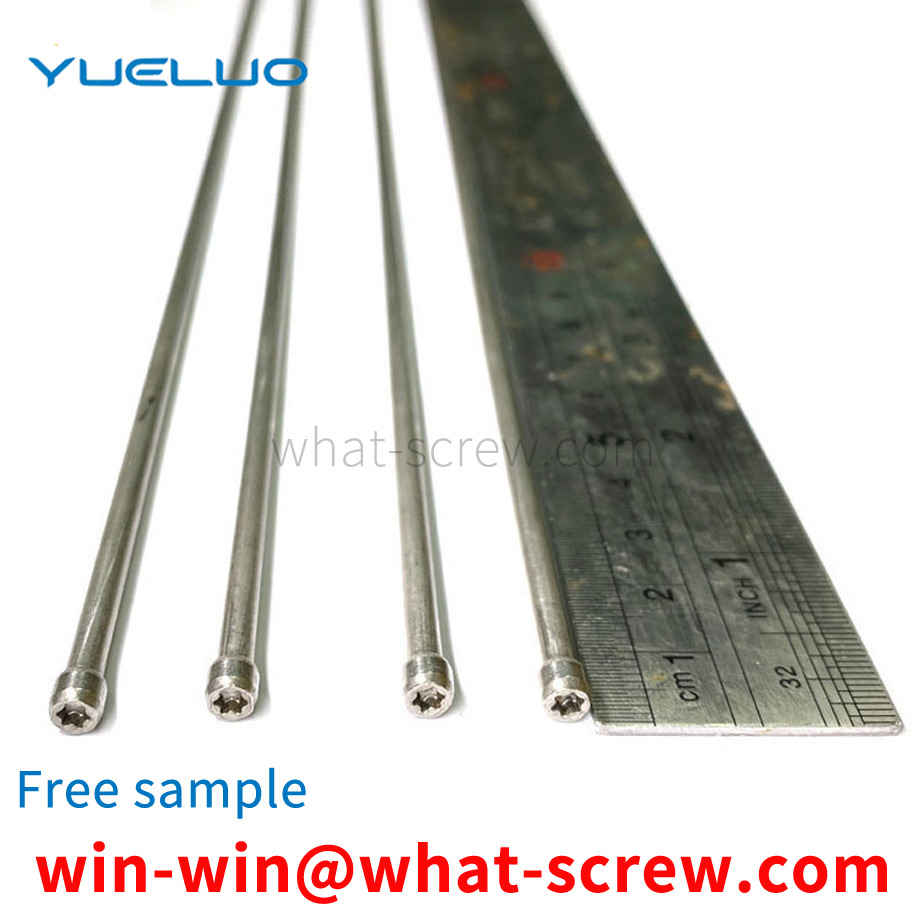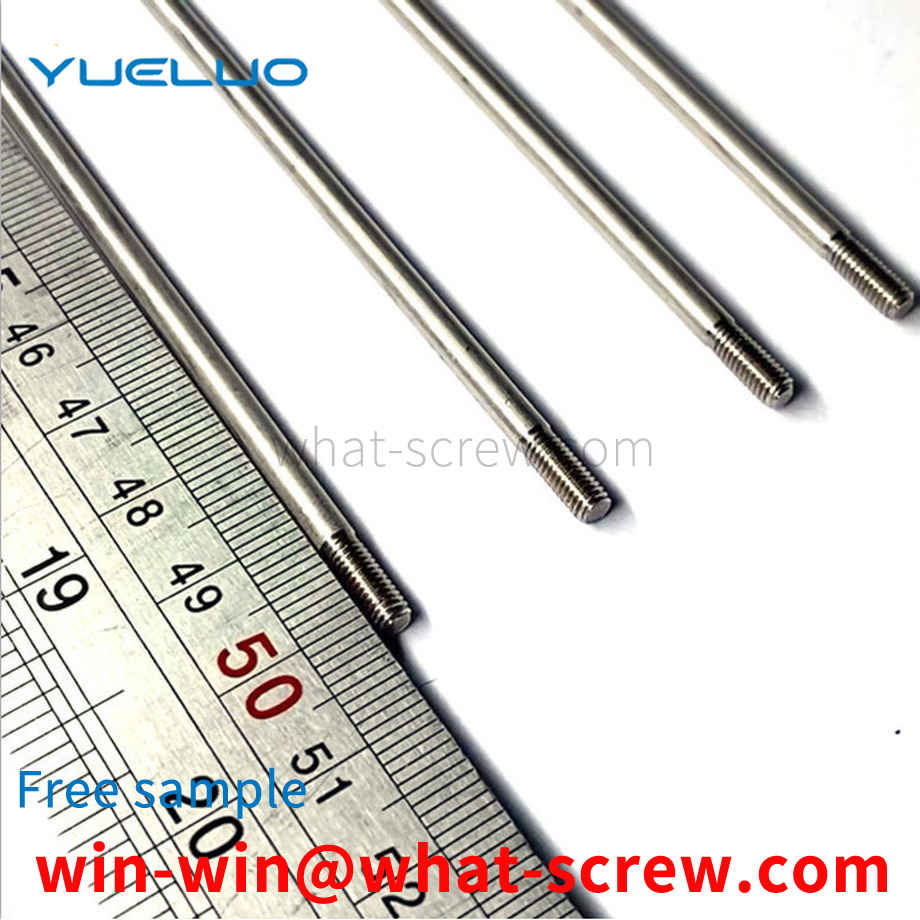There are many names for screws in the scope of application. Everyone may have different names. Some people call them screws, some people call them screws, some people call them standard parts, and some people call them fasteners. Although there are so many names, but the meaning is the same, they are all screws. A screw is a generic term for a fastener. The principle of the screw is to use the physical and mathematical principles of the oblique circular rotation of the object and the friction force to gradually tighten the tool of the utensil. Screws are indispensable in daily life and industrial production, so screws are also known as the rice of industry. The scope of application of screws includes: electronic products, mechanical products, digital products, electrical equipment, electromechanical mechanical products. Ships, vehicles, hydraulic engineering, and even chemical experiments also use screws. There are many types of screws, whether it is a very small screw for glasses or a large screw for large heavy electrical engineering. The accuracy of screws is usually 6g (class 2, the American standard IFI is 2A teeth), and the rough screws used in construction projects are 1g. Screws are widely used, so the screw market is large, resulting in more manufacturers producing screws. When buyers choose a professional screw manufacturer, they need to understand some professional basic knowledge of screws, such as screw classification standard specification and American screw specification table.
Fasteners are widely used in nuclear power plant safety systems and equipment, and undertake the functions of component connection, pressure sealing box support and fixation, and their quality and performance play an important role in nuclear power plant safety systems and equipment performing nuclear safety functions. None of the special fasteners for nuclear power in the prior art have protective sleeves, which cannot protect the exposed part of the bolt shank. In order to solve the above difficulties, it is necessary to develop a fastener stud nut washer set that can protect the exposed part of the bolt shank.
In the past production, gaskets were generally obtained from two channels: first, standard gaskets were mostly purchased from the market, and the cost was high; non-standard gaskets, due to the small demand, required separate tooling and molds, which were expensive and long production cycle. It is difficult to purchase; Second, the plate is purchased by the enterprise, and then the washer is formed by the automatic cutting machine. Because the cut nodules and cut marks produced by flame cutting do not meet the requirements for use, the inner and outer diameters need to be reserved 2 ~3mm machining allowance, and then finish the outer diameter and inner diameter by lathe.
Screw, some people call it screw [Screw] (screw), screw (screw rod). In fact, the screw is a general term, and the screw and the screw rod are different from each other. Screws are generally called wood screws to fasten wooden and plastic parts. The screw rod is a machine screw (machine screw), which is the kind of flat head at the front end. The pitch is small and uniform. It is generally used to fasten metal and machine parts. With the development of society, the materials for making screws are also various, and the functions of screws are becoming more and more diverse.
The quality of electroplating is measured primarily by its corrosion resistance, followed by appearance. Corrosion resistance is to imitate the working environment of the product, set it as the test condition, and perform a corrosion test on it. The quality of electroplating products shall be controlled from the following aspects: 1. Appearance: Partial uncoated, scorched, rough, gray, peeling, crusted, and obvious stripes are not allowed on the surface of the product, and pinholes, pitting, and black plating are not allowed. Slag, loose passivation film, cracks, peeling off and serious passivation marks. 2. Coating thickness: The operating life of fasteners in corrosive atmosphere is proportional to its coating thickness. The general recommended thickness of economical electroplating coating is 0.00015in ~ 0.0005in (4 ~ 12um). Hot-dip galvanizing: the standard average thickness is 54 um (43 um for diameter ≤ 3/8), and the minimum thickness is 43 um (37 um for diameter ≤ 3/8). 3. Coating distribution: With different deposition methods, the aggregation method of the coating on the surface of the fastener is also different. During electroplating, the coating metal is not uniformly deposited on the peripheral edge, and a thicker coating is obtained at the corners. In the threaded portion of the fastener, the thickest coating is located on the thread crest, gradually thinning along the flank of the thread, and the thinnest deposit is at the bottom of the thread, while hot dip galvanizing is just the opposite, the thicker coating is deposited on the inside corners and On the bottom of the thread, mechanical plating tends to deposit the same metal as hot-dip plating, but is smoother and has a much more uniform thickness over the entire surface [3]. 4. Hydrogen embrittlement: During the processing and processing of fasteners, especially in the pickling and alkali washing before plating and the subsequent electroplating process, the surface absorbs hydrogen atoms, and the deposited metal coating then traps hydrogen. When the fastener is tightened, the hydrogen is transferred towards the most stressed parts, causing the pressure to build up beyond the strength of the base metal and producing microscopic surface cracks. Hydrogen is particularly active and quickly seeps into the newly formed fissures. This pressure-rupture-penetration cycle continues until the fastener breaks. Usually occurs within a few hours after the first stress application. To eliminate the threat of hydrogen embrittlement, fasteners are heated and baked as soon as possible after plating to allow hydrogen to seep out of the plating, typically at 375-4000F (176-190C) for 3-24 hours. Since mechanical galvanizing is non-electrolyte, this virtually eliminates the threat of hydrogen embrittlement, which exists in galvanizing using electrochemical methods. In addition, due to engineering standards, it is forbidden to hot-dip galvanize fasteners with hardness higher than HRC35 (Imperial Gr8, metric 10.9 and above). Therefore, hydrogen embrittlement rarely occurs in hot-dip plated fasteners. 5. Adhesion: Cut or pry off with a solid tip and considerable pressure. If, in front of the blade tip, the coating peels off in flakes or skins, exposing the base metal, the adhesion shall be considered insufficient.
We have many years of experience in the production and sales of screws, nuts, flat washers, etc. The main products are: single-head welding lug gaskets, hollow brick plane bolts, cap locking through holes, flat head isolation stud nuts and other products, we can provide you with The right fastener solution for you.



















 Service Hotline
Service Hotline




